|
|
General: ¿CUAL ES EL MISTERIO QUE ESCONDE RENNES LE CHATEAU?
Elegir otro panel de mensajes |
|
|
Rennes-le-Chteau: El Misterio De La Tumba
|
|
 n oscuro monumento situado en las cercanías de Rennes-le-Chteau sirvió de modelo para un cuadro pintado en Italia y expuesto actualmente en el Louvre. Éste y otros enigmas vinculan al abate Saunière con historias de tesoros ocultos y órdenes militares. n oscuro monumento situado en las cercanías de Rennes-le-Chteau sirvió de modelo para un cuadro pintado en Italia y expuesto actualmente en el Louvre. Éste y otros enigmas vinculan al abate Saunière con historias de tesoros ocultos y órdenes militares.
|
| |
|
 |
 |
|
El arco de triunfo de Tito, en el foro de Roma, muestra la gran menorah (candelabro de seis brazos), las trompetas de plata y lo que podría ser el Arca de la Alianza, todo ello tesoros del templo de Salomón.
|
Cuando Béranger Saunière pasó varias noches en el cementerio de Rennes-le-Cháteau borrando las inscripciones de las dos lápidas de la tumba de Marie de Negri d'Albes, no sabía que ya habían sido copiadas: una vez por el Bulletin de la Société des études scientifiques de l'Aude, y otra en un libro de Eugène Stublein, Pierres gravées du Languedoc.
La primera lápida se ha perdido. En la transcripción, llaman la atención los errores que contiene. Al parecer, fue encargada por el que era entonces abate de Rennes-le-Cháteau, Antoine Bigou.
La segunda piedra subsiste, sin ninguna inscripción, como tapa de un osario, en el rincón noroeste del cementerio. Tenía grabadas una serie de frases enigmáticas, entre ellas un lema monogramático que también aparece en uno de los manuscritos que descubrió Saunière. Una de las frases es el conocido dicho latino Et in Arcadia Ego, cuya traducción es «Yo también estoy en Arcadia». Significa que aun en el legendario paraíso de los pastores griegos, la muerte estaba presente.
Saunière trajo consigo de París una reproducción del cuadro «Los pastores de Arcadia» de Nicolás Poussin, pintado entre 1635 y 1650. Representa a tres pastores y una pastora clásicos ante una gran tumba, en la que se lee una inscripción: «Et in Arcadia Ego». Y a 10 kilómetros de Rennes-le-Cháteau, en una colina rocosa, está esa misma tumba. Ha sido recubierta con cemento, de modo que no se aprecia ninguna inscripción, pero su forma es inconfundible y hasta ciertos picos montañosos del horizonte pueden ser identificados.
Marie de Negri estaba emparentada con la familia de Hautpoul, descendiente de Bertrand de Blanchefort (primer Gran Maestre templario), y con los Fleury, que recibieron la herencia familiar. En 1644, François-Pierre de Hautpoul, barón de Rennes, hizo testamento y le agregó documentos que apoyaban el derecho al título de la familia durante más de 600 años. El testamento y los documentos se extraviaron durante más de 130 años. Cuando fueron recuperados en el despacho de un notario y un Hautpoul quiso verlos, recibió la siguiente respuesta: «No sería prudente por mi parte hacer público un testamento tan importante...» Los papeles volvieron a desvanecerse.
En 1792, Bigou rehusó jurar fidelidad a la nueva República Francesa y cruzó la frontera en dirección a España, donde murió. La familia Fleury también se exilió.
 |
|
Al parecer, éste es el modelo de la tumba que pintó Poussin en su cuadro, aunque un recubrimiento de cemento impide apreciar si en ella ha habido inscripciones. Este enigmático monumento se halla en una colina cercana a Rennes-le-Chteau, en la parroquia de Arques.
|
Pero en la decoración de la iglesia, Saunière hizo una alusión directa a las tierras de los Fleury. Sobre el confesionario hay un gran relieve que representa a Cristo en el monte de los Olivos, hecho de madera y yeso. El empinado montecillo está lleno de flores (fleuri, en francés) y el paisaje del fondo tiene rasgos del de los alrededores de Rennes.
Se ha especulado con el significado del texto que hay debajo de este cuadro: «Venid a mí, los que estáis abrumados, y yo os daré el descanso». En francés, «los que estáis abrumados» se dice «vous qui êtes accablés», y es fácil descubrir las palabras été (verano), sac à cable (saco con cuerda) y blé (trigo, pero también tesoro, en lenguaje coloquial).
Se han descubierto acertijos del mismo tipo en la inscripción de una imagen de la Magdalena que el mismo Saunière pintó en el panel delantero del altar. El ingenuo relieve muestra a María Magdalena arrodillada en una gruta. Existen muchas grutas y cuevas alrededor de Rennes. En su juventud, Saunière debió de conocer a un viejo ermitaño que vivía no muy lejos, en la garganta de Galamus, en una gruta o aven aislada y dedicada a San Antonio, parecidísima a aquella en que se arrodilla la Magdalena, y que también coincide con la descripción del abismo en el cual el pastor Paris descubrió sus monedas.
Por otra parte, existe un vínculo significativo entre San Antonio y María Magdalena. San Antonio está considerado como la primera persona que organizó la vida monástica. Algunas de sus reliquias fueron trasladadas a Francia, y en el siglo XI se construyó una gran catedral para custodiarlas. Quienes habían recuperado las reliquias fundaron la Orden de San Antonio, que finalmente se fusionó con una de las grandes órdenes militares, los Hospitalarios de San Juan.
 |
|
Losa de la tumba de Marie de Negri d'Albes, con el lema «Et in Arcadia Ego» grabado en caracteres latinos y griegos.
|
Se dice que los antoninos introdujeron el culto de Santa María Egipcíaca. Ésta, que vivió a fines del siglo IV, había sido prostituta en Alejandría. Pero inspirándose en la historia de San Antonio se arrepintió, y pasó el resto de su vida sola en un lugar desierto. Se la confundió con María Magdalena en la oscura leyenda de las tres Marías, evangelizadoras de la Provenza, con lo cual enlaza también con los cultos de las vírgenes negras que había sobrevivido en toda Francia en grutas subterráneas, dedicadas a la antigua diosa madre.
Por otra parte, después de la ascensión de la masonería en Francia, no pasó mucho tiempo antes de que se afirmara que existía una conexión legendaria entre los antiguos secretos de los constructores del templo de Salomón, los caballeros templarios y la masonería escocesa.
Cuando Béranger Saunière llegó a París en enero de 1893, se encontró en medio de una disputa entre la Ordre Kabbalistique en la Rose-Croix y la Ordre de la Rose-Croix Catholique du Temple et du Graal. El Rosacrucianismo y la Rose-Croix no eran nuevos en Francia. Ya en 1623 se dijo que el filósofo Descartes era rosacruz. Y en la Francmasonería, el grado 18 del rito «escocés» es el Caballero del Pelícano y del Águila y Príncipe Soberano Rosacruz de Heredom.
Pero la Francmasonería fue prohibida en tiempos de la Revolución Francesa. Aunque Napoleón revivió el interés por el movimiento, hubo que esperar a la restauración de la monarquía para que volviera a florecer, combinado con un creciente interés por el ocultismo.
El hilo está enredado, y hay pocas o ninguna prueba de que las extravagantes afirmaciones que se han hecho sean ciertas. Pero si los templarios o los antoninos hubiesen poseído información secreta, ésta podría haber pasado a los hospitalarios, que se hicieron cargo de gran parte de las propiedades de los templarios, o podría haber pasado de generación en generación a través de las familias supervivientes. Quizá sea cierto que los Rosacruces poseían un secreto, como pretendían ellos; quizá la Francmasonería tiene realmente la clave del enigma Rosacruz; quizá algún ocultista de París reconoció en los papeles que traía Saunière la clave de algo perdido y muy preciado.
 |
|
Lápida de la tumba de Marie deNegri d'Albes. En ella hay un considerable número de errores.
|
Junto a la entrada de la iglesia de Rennes puede verse una figura de Asmodeo, «demonio y guardián» que custodiaba el tesoro de Salomón. Encima de él hay cuatro ángeles. A primera vista, éstos parecen hacer la señal de la cruz, pero el ángel de arriba tiene la mano izquierda en el pecho y la mano derecha encima de la cabeza: éste es el gesto de Asmodeo, el signo que rodeaba la cabeza de macho cabrío de Baphomet en los ritos de los templarios.
Y así están las cosas, por el momento. Todavía no sabemos -y probablemente no sabremos nunca- qué fue lo que encontró Saunière. El misterio empieza con el descubrimiento de los manuscritos y su conexión con la tumba de Marie de Negri d'Albes. Sólo dos de los cuatro manuscritos han sido fotografiados y publicados; quizá fueran los menos importantes, y los otros proporcionen detalles más explícitos acerca de la ubicación del tesoro, cuya leyenda había ido pasando, de generación en generación, por la familia Blanchefort.
Pero la pieza que faltaba tenía que ser, o un documento, o el mismo tesoro y, presumiblemente, la tumba que pintó Poussin contenía alguna clave, razón por la cual fue cubierta de cemento. También la gruta puede haber contenido un tesoro escondido -de los visigodos, de los cátaros, de los templarios- cuya recuperación puede haber sido confiada a Saunière con la debida supervisión. Quizá éste, como muestra de agradecimiento, restauró su iglesia con motivos que hacían una enigmática referencia al origen de su riqueza.
El papel desempeñado por el Prieuré de Sion, la conexión con los Habsburgo y todas las ramificaciones de esta organización casi desconocida... son otra historia.
El Secreto De La Tumba
 |
|
Hay dos versiones del cuadro de Poussin, donde en una ha desaparecido el cráneo y algunos personajes han sido sustituidos por otros.
|
El cuadro de Poussin «Los pastores de Arcadia» del que existen dos versiones, plantea algunos problemas fascinantes. La primera versión, que pertenece en la actualidad a la colección de Chatsworth House, en Derbyshire (Inglaterra), se inspiró en un cuadro del Guercino, ejecutado en 1620, y parece probable que el Guercino o sus mecenas, Giulio Rospigliosi, que después fue el papa Clemente IX, compusieran la famosa frase «Et in Arcadia Ego».
En el cuadro del Guercino, dos pastores han encontrado un cráneo humano apoyado en un bloque de piedra en el que está grabada la inscripción; en la primera versión de Poussin, dos pastores y una pastora leen la inscripción en una tumba ornamentada al estilo clásico. El cráneo, que forma parte de la decoración de la tumba, es apenas visible, y la cuarta figura es una personificación del río Alfeo.
La segunda versión del cuadro, la que se halla ahora en el Louvre, es visiblemente distinta. El cráneo ha desaparecido, Alfeo ha sido sustituido por un tercer pastor, y las posiciones de las figuras han cambiado. En cuanto a la tumba, ha perdido toda su elegancia y su decoración; ahora constituye un bloque casi cúbico de piedras toscamente talladas, y la parte superior tiene la característica inclinación de la tumba solitaria de las afueras de Arques. Parece imposible que Poussin eligiera como modelo semejante monumento a menos que el original le resultara familiar. Y, ¿qué razones pudo tener para realizar una segunda versión de un tema no muy corriente? En efecto, este tema parece haber tenido un significado especial en la vida de Poussin: cuando su tumba, en Roma, fue restaurada por Chateaubriand en 1829, le agregó un relieve con los pastores de Arcadia.
http://www.mundoparanormal.com/docs/enigmas/rennes_le_chateau_el_misterio_tumba.html
|
|
|
|
|
|
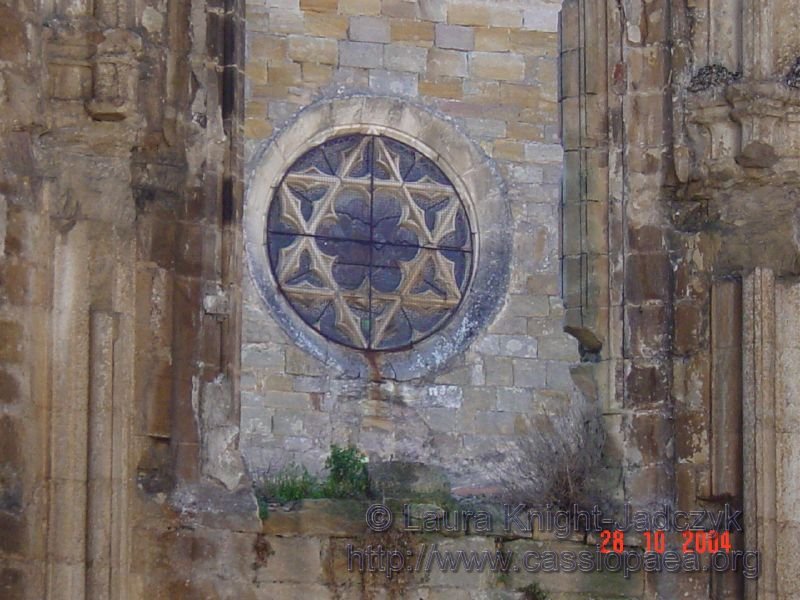 in the corners are the trefoils in Saunieres study I love this picture of the Meandros and the cubes at Rennes http://www.rennes-le-chateau-rhedae.com/rlc/chl/dallage.jpgthere is magic inside the church at Rennes  Merovingian shield 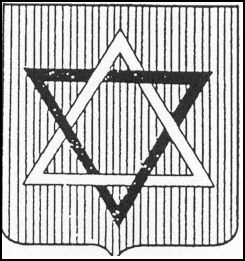
_________________
Everything is Connected and there are no
coincidences
|
|
|
|
|
Rennes-le-Chateau. Blanchefort. Bezu. Serre de Lauzet. La Soulane. Five mountains, equal distances apart, they form the shape of a pentagram.  This pentacle points at the North Pole. As it existed 10000 years ago.  |
|
|
|
|
I love your pictures of the Dolmen there and the Romanesque Pillars and the star on the outside
It has a sacred well
All the ingredients of worship of the goddess .....Notre Dame ....Our Lady
the 13th century chapel looks like it is built over a pagan site
but Nic I want you to observe the wall paper in side ....has that brick like pattern
very much like Rennes Chapel
the wall paper behind Magdalene it has little squares on the edge of random brick pattern and a design kinda like a cross ....but the chapel at Centeilles has the random brick pattern and a star lots of stars ...like Sauniere's Magdalene chapel The sacred image of Isis with the Horus Child in Rome often became a model for the Christian Madonna with the Child Jesus and many of the epithets of the Egyptian Mother of God came to be used for the Christian Mother of God  A picture of a Black Isis ...or Black Madonna 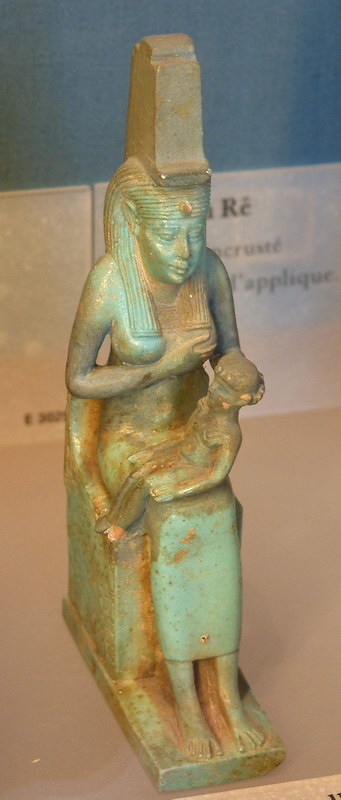
_________________
Everything is Connected and there are no
coincidences
|
|
|
|
|
And there is the mystery of the hands on Magdalene at the altar at Rennes these hands show up in different places such as the Magdalene at Our Lady of Knock in the Caravaggio painting at the Miraculous Medal Shrine at Perryville Mo I believe it was at Rennes Les Bains Magdalene and then the supposed Grandmaster of the Priory ....Cocteau's hands folded as Magdalene at Rennes isn't that mysterious.....isn't it possible that it carries a "secret" for those who "See" It means nothing to some people but to others it must mean something very spiritual and important But heh ...you guys don't see the secrets and the mystery to Rennes and yet you hang around  ....waiting and watching 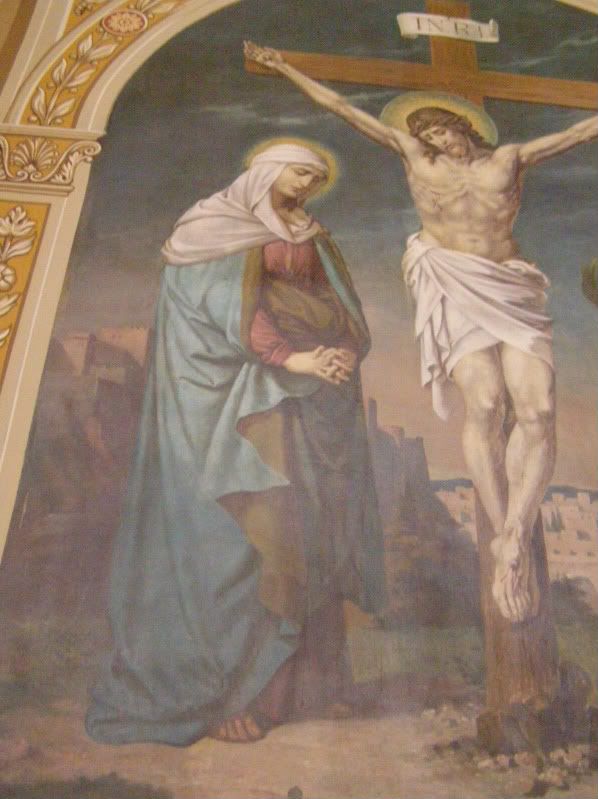 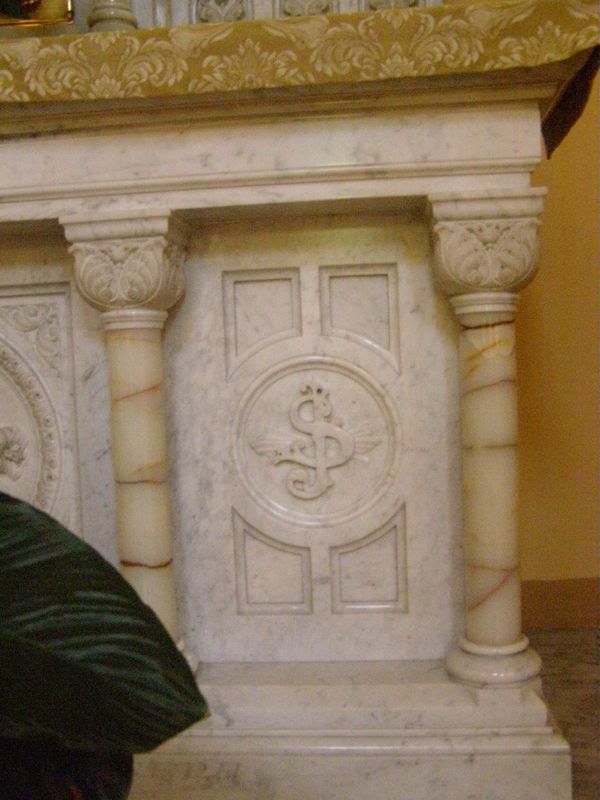 http://forum.andrewgough.co.uk/viewtopic.php?f=1&t=3596&start=1450 http://forum.andrewgough.co.uk/viewtopic.php?f=1&t=3596&start=1450Is this a S and P or a S and J ....and it is a winged serpent such as the winged serpents (dragons) found at the base of the Apprentice Pillar at Rosslyn chapel? Cathars were connected to "dragons" ....Blanche Castile ....cut the head of the dragon at Montsegur were all the Cathars killed or did they go underground and yes the Templars fought along side them in the Crusades  Ireland ....home of the Celts....Magdalene has her hands folded the same as at Rennes vandalized and yet someone tied a ribbon around her hands Why? to distract the viewer or attract the viewer Its a mystery or a coincidence but some can see it and others can't
_________________
Everything is Connected and there are no
coincidences
|
|
|
|
|
Are you referring to the Station of the Cross at Rennes Chateau? It's about Truth
station of the cross 2
at Rennes Chateau
John 18:38
Quid est veritas?.
"Truth? What is truth?" Pilate asks
“You are a king, then!” said Pilate. Jesus answered, “You say that I am a king. In fact, the reason I was born and came into the world is to testify to the truth. Everyone on the side of truth listens to me.”
“What is truth?” retorted Pilate. With this he went out again to the Jews gathered there and said, “I find no basis for a charge against him.”
The Truth can be distorted and hard to find
_________________
Everything is Connected and there are no
coincidences
|
|
|
|
|
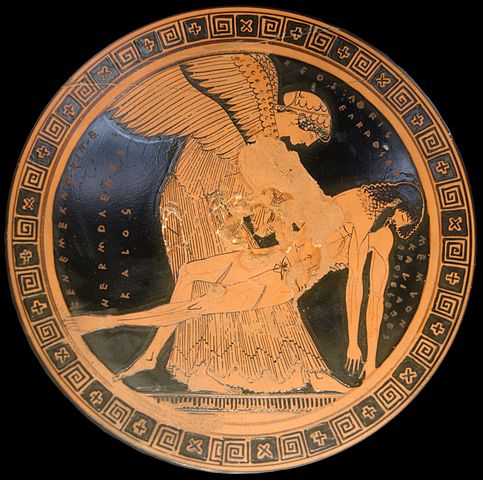 the meandros is a symbol used at Rennes Chateau, and Chartres, this is the Memnon pieta Interest in Greek art lagged behind the revival of classical scholarship during the Renaissance and revived in the academic circle round Nicholas Poussin in Rome in the 1630s. Though modest collections of vases recovered from ancient tombs in Italy were made in the 15th and 16th centuries these were regarded as Etruscan. It is possible that Lorenzo de Medici bought several Attic vases directly from Greece;
_________________
Everything is Connected and there are no
coincidences
|
|
|
|
|
lovuian wrote:
Michael the Archangel plays a part
This prayer to Saint Michael the Archangel, originally composed in Latin, was written by Pope Leo XIII in 1886.
Prayer to Saint Michael the Archangel
Saint Michael the Archangel, defend us in battle, be our protection against the wickedness and snares of the devil. May God rebuke him we humbly pray; and do thou, O Prince of the Heavenly host, by the power of God, cast into hell Satan and all evil spirits who wander through the world seeking the ruin of souls. Amen.
John Paul II and Pope Benedict XVI has requested to say the prayer after mass
Speaking of St Michael, there is only one item of stained glass in the church, in the east window of the South (Templar) chapel; I don't know when it dates from. I presume this is St Michael, slaying a dragon.  It could be St George, who also killed a dragon, but St Michael seems more likely, as he's the saint to whom the church is dedicated.
You know I LOVE the stained glass windows Richard but now remember your in a Templar church...look at the TRiangle and diamond white glass around St George its the diamond or triangles connected again like the water font and solomon seal Here is Arque's symbol ...the diamond the Templars were here too  The Rhombus The rhombus is often called a diamond, after the diamonds suit in playing cards, or a lozenge, though the former sometimes refers specifically to a rhombus with a 60° angle (see Polyiamond), and the latter sometimes refers specifically to a rhombus with a 45° angle   It's the floor tile at Rennes Chateau
_________________
Everything is Connected and there are no
coincidences
|
|
|
|
|
All over the Magdalene chapel lies the Rosy crosses at Rennes https://en.wikipedia.org/wiki/Rennes-le ... becken.JPGThey are above each station of the cross https://en.wikipedia.org/wiki/Rosicruci ... _18eme.jpgAccording to the writings of the Masonic historian E.J. Marconis de Negre,[19] who together with his father Gabriel M. Marconis is held to be the founder of the "Rite of Memphis-Misraim" of Freemasonry, based on earlier conjectures (1784) by a Rosicrucian scholar Baron de Westerode[20] and also promulgated by the 18th century secret society called the "Golden and Rosy Cross", the Rosicrucian Order was created in the year 46 when an Alexandrian Gnostic sage named Ormus and his six followers were converted by one of Jesus' disciples, Mark. Their symbol was said to be a red cross surmounted by a rose, thus the designation of Rosy Cross. From this conversion, Rosicrucianism was supposedly born, by purifying Egyptian mysteries with the new higher teachings of early Christianity.[21]
According to Maurice Magre (1877–1941) in his book Magicians, Seers, and Mystics, Rosenkreutz was the last descendant of the Germelshausen, a German family from the 13th century. Their castle stood in the Thuringian Forest on the border of Hesse, and they embraced Albigensian doctrines. The whole family was put to death by Landgrave Conrad of Thuringia, except for the youngest son, then five years old. He was carried away secretly by a monk, an Albigensian adept from Languedoc, and placed in a monastery under the influence of the Albigenses, where he was educated and met the four Brothers later to be associated with him in the founding of the Rosicrucian Brotherhood. Magre's account supposedly derives from oral tradition.
Around 1530, more than eighty years before the publication of the first manifesto, the association of cross and rose already existed in Portugal in the Convent of the Order of Christ, home of the Knights Templar, later renamed Order of Christ. Three bocetes were, and still are, on the abóboda (vault) of the initiation room. The rose can clearly be seen at the center of the cross.[22][23] At the same time, a minor writing by Paracelsus called Prognosticatio Eximii Doctoris Paracelsi (1530), containing 32 prophecies with allegorical pictures surrounded by enigmatic texts, makes reference to an image of a double cross over an open rose; this is one of the examples used to prove the "Fraternity of the Rose Cross" existed far earlier than 1614 https://en.wikipedia.org/wiki/Rosicrucianism
_________________
Everything is Connected and there are no
coincidences
|
|
|
|
|
Quote:
Originally Posted by solarclarity   ...Gold and Red...Mary Magdalene kneeling in prayer with a skull at her knees...Gold and Red... ...Gold and Red...Mary Magdalene kneeling in prayer with a skull at her knees...Gold and Red...Castle Coustaussa - occupied by Simon de Montfort - this castle and the skull are the significant elements on the Mary Magdalene altar at Rennes Le Chateau 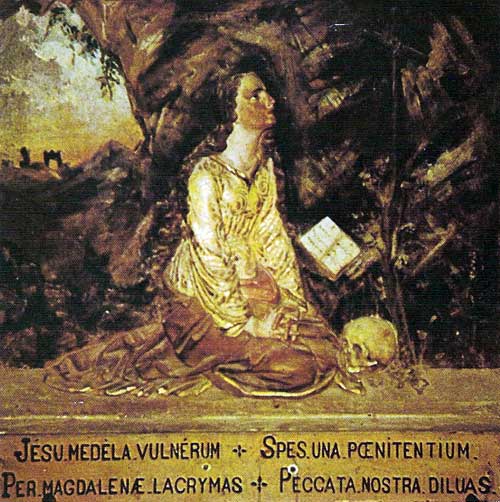 ...Gold and Red... ...Gold and Red...The altar, church of St. Mary Magdalene in Rennes Le Chateau 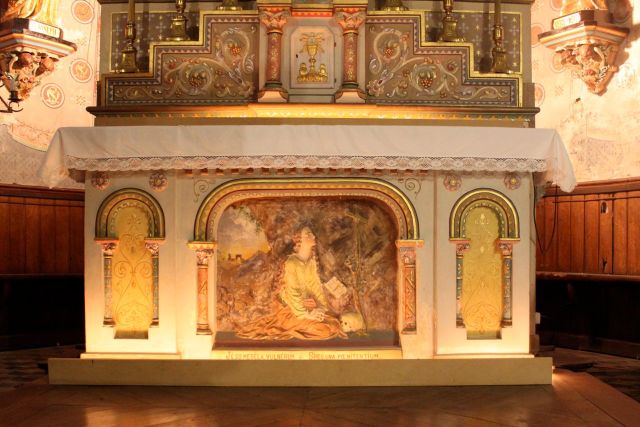  Crimson is a strong deep red colour,and sometimes the name is used for slightly reddish-blue colours that are between red and rose The Vatican, the real whore of Babylon 'sitting' on seven hills applied the reversal...intense repetition of the reversal 'throught the ages' is 'wroughting the great work' to bring forth 'the under ground stream'.... The 'deity' they worship as 'the lady in red' is NOT even a woman:  Lucifer sitting on the arc of the covenant |
The one thing that stands out is the Queen Bee in the very centre of the alter, same as the golden bees as is found in King Childerick's grave, same hive that was built into the top centre of Rosslyn Chapel. See the picture hear, where is there a Sovereign Queen still in charge. Who do all masons sign their souls away to.
|
|
|
|
|
|
LA TORRE DE BABEL, OSEA LA UNION ENTRE EL CIELO Y LA TIERRA, ES UN "AGUJERO DE GUSANO". EN ESTE MARCO ES EL GRIAL MISMO. SIMBOLIZA LA UNION ENTRE EL CIELO Y LA TIERRA, O LA CUADRATURA DEL CIRCULO (CIRCULO=CIELO; CUADRADO=TIERRA) O LA ESCUADRA Y EL COMPAS MASONICO. ES OBVIA LA CONNOTACION CON LA "ESCALERA DE JACOB". MAGDALENA TIENE CONNOTACION CON EL MISMO TERMINO TORRE EN HEBREO.
1. Josué 15:37 Zenán, HADASA, Migdal-gad,
2. Ester 2:7 Y había criado a HADASA, es decir, Ester, hija de su tío, porque era húerfana; y la joven era de hermosa figura y de buen parecer. Cuando su padre y su madre murieron, Mardoqueo la adoptó como hija suya.
ESTHER=ISHTAR=STAR GATE=PUERTA ESTELAR
BABEL=PUERTA DE DIOS
1 Pedro 5:13: La iglesia que está en Babilonia, elegida juntamente con vosotros, y Marcos mi HIJO, os saludan.
HECHOS 12:12 / 33 / JUAN MARCOS
ESTRELLA DE 6 PUNTAS = 33 = 2 TRIANGULOS CRUZADOS =ALQUIMIA
BABILONIA ESTABA EN EL PARALELO 33 Y ERA UNA CIUDAD DE 7 COLINAS.
BABEL/ BABY / BEBE /
| milky way in Simple Gematria Equals: 119 |
( |
m 13 |
i9 |
l 12 |
k 11 |
y 25 |
0 |
w 23 |
a1 |
y 25 |
) |
| queen mary in Simple Gematria Equals: 119 |
( |
q 17 |
u 21 |
e5 |
e5 |
n 14 |
0 |
m 13 |
a1 |
r 18 |
y 25 |
|
| hebrew calendar in Simple Gematria Equals: 119 |
( |
h8 |
e5 |
b2 |
r 18 |
e5 |
w 23 |
0 |
c3 |
a1 |
l 12 |
e5 |
n 14 |
d4 |
a1 |
r 18 |
| mary magdalene in Simple Gematria Equals: 119 |
( |
m 13 |
a1 |
r 18 |
y 25 |
0 |
m 13 |
a1 |
g7 |
d4 |
a1 |
l 12 |
e5 |
n 14 |
e5 |
|
|
|
|
 Primer Primer
 Anterior
41 a 55 de 70
Siguiente Anterior
41 a 55 de 70
Siguiente Último
Último
|
|
| |
|
|
©2024 - Gabitos - Todos los derechos reservados | |
|
|

